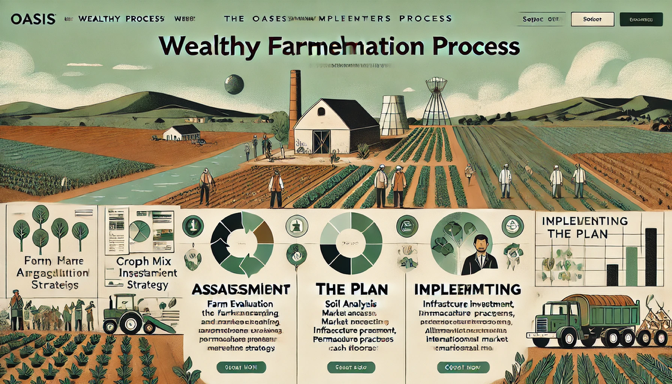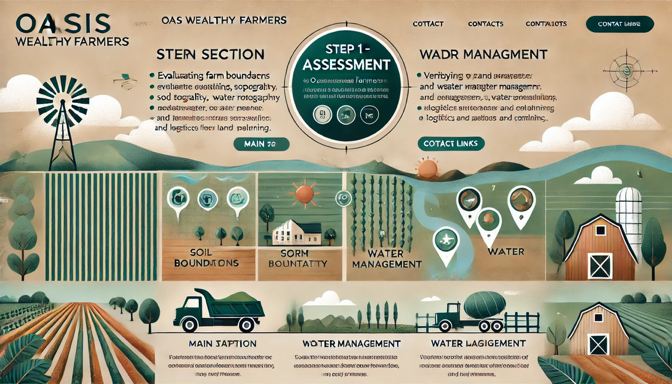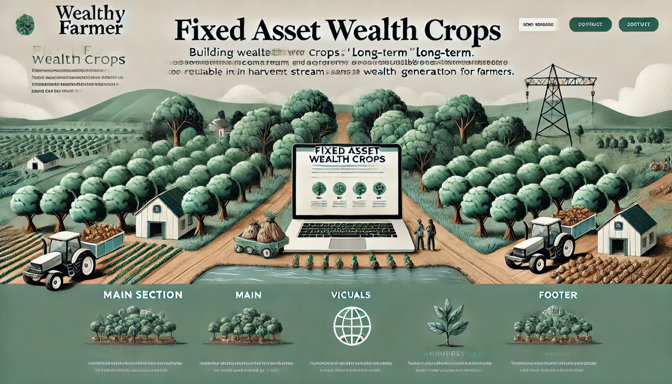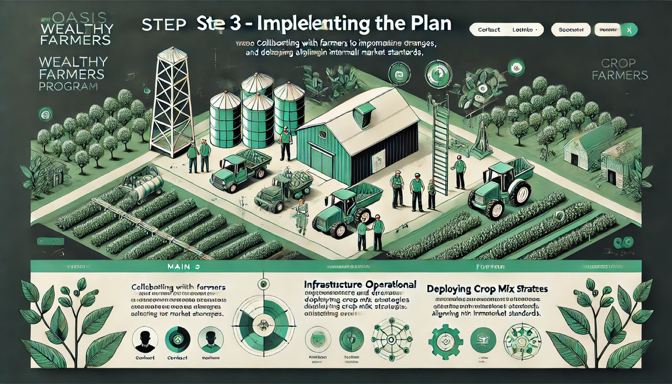
Step 1 - Assessment

The assessment phase involves a detailed evaluation of the farm’s physical boundaries and field areas. This includes establishing baseline data on soil quality, topography, weather, and water management. Factors such as market distance, farm accessibility, and logistics provide essential information for crop mix planning. Verification of land title, zoning permissions, and compliance is crucial before investment or commercial commitments can proceed.
Step 2 - The Plan

With data collected during the assessment, a comprehensive Wealth Management plan is formulated. This plan covers infrastructure investment, soil mechanics, biology, chemistry, logistics, drainage, and irrigation systems to optimize cultivation potential. The plan also emphasizes sustainable practices, including a permaculture approach that supports soil health and efficient water resource management.
This structured plan allows the farm to engage in forestry and agriculture contracts that generate cash flow and build long-term wealth. Key elements include annual cash flow projections, farm valuation, and asset growth forecasts, enabling farm owners to plan effectively for retirement, expansion, or sale.
Step 3 - Implementing the Plan

Once the plan is in place, the Wealthy Farmer team collaborates directly with the farmer to implement the necessary infrastructure and operational changes. The agreed crop mix strategy is deployed across the farm, aligning with international market standards and contract agreements.
This coordinated approach positions the farm as a contributor to global trade, supported by robust trade contracts that provide security for both farmers and customers, fostering a sustainable and profitable agricultural ecosystem.
